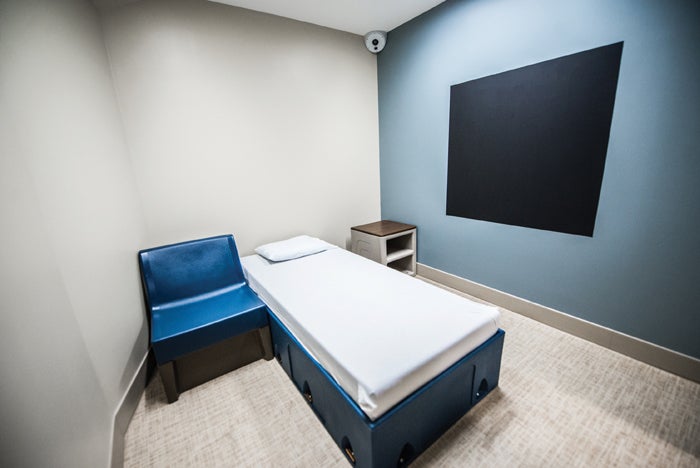ASHE’s three-step, ligature-risk guidance
The American Society for Health Care Engineering advises a three-step strategy for managing ligature risks and preventing patient self-harm in general acute care or emergency departments (these steps are not applicable in psychiatric units):
1: Identify
Identify patients who are currently at risk for intentional harm to themselves or others. (Steps 2 and 3 only need to be taken with patients who are identified as a risk.)
2: Observe
Provide 1:1 monitoring of at-risk patients with continuous visual observation. The person observing the patient needs to be able to intervene immediately. Video observation is not appropriate since the video monitoring process cannot provide immediate intervention. Note that some states require privacy in certain situations, such as when the patient is using the bathroom. In these instances, since 1:1 observation is not possible, the bathroom used by the patient must be ligature-resistant. Converting a bathroom to a ligature-resistant environment can affect fire and life-safety regulations and Americans with Disabilities Act-compliance issues. Organizations should conduct a careful review of the rules and regulations that apply to their specific facilities.
3: Remove
In any instances where 1:1 continuous observation is not feasible, hospitals must remove or clinically mitigate all environmental risks. Loose items should be removed from the patient area. Fixtures installed in the room do not need to be removed; however, patient access to certain areas may need to be restricted to prevent patients from reaching items that they could use for self-harm.





